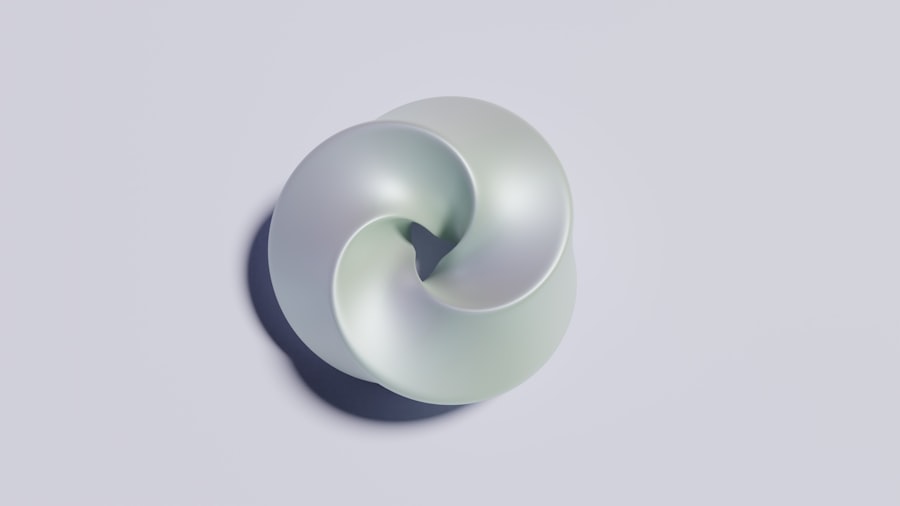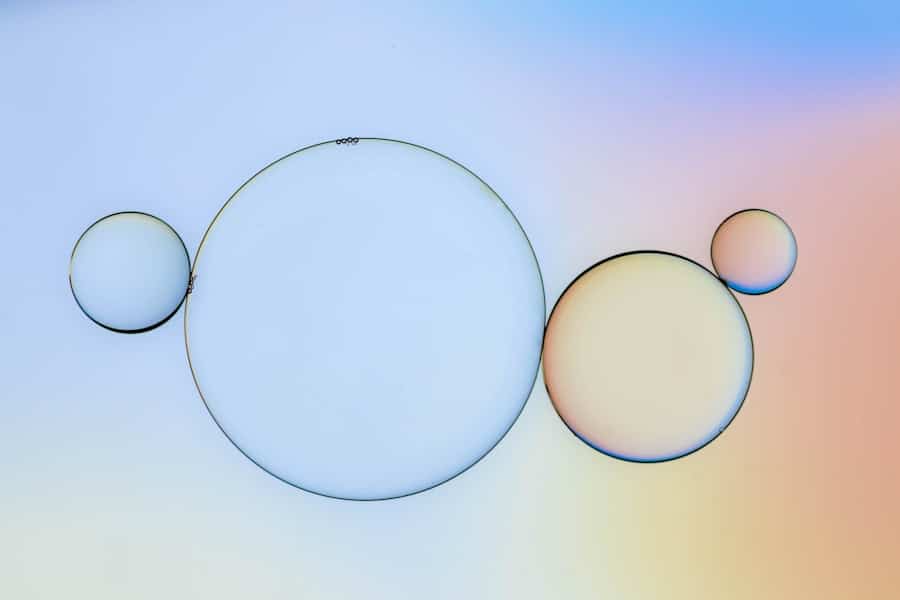Circular design principles represent a transformative approach to product development, emphasizing sustainability and resource efficiency. Unlike traditional linear models, which follow a “take-make-dispose” trajectory, circular design seeks to create a closed-loop system where products are designed for longevity, reuse, and recyclability. This paradigm shift is particularly crucial in the context of the electronics industry, where rapid technological advancements often lead to obsolescence and significant waste generation.
By integrating circular design principles, manufacturers can minimize environmental impact while fostering innovation and economic resilience. At its core, circular design encourages a holistic view of product life cycles, considering not only the materials used but also the end-of-life scenarios for electronic devices. This approach necessitates collaboration among various stakeholders, including designers, manufacturers, consumers, and policymakers.
By prioritizing sustainability from the initial design phase through to disposal or repurposing, circular design principles can significantly reduce the ecological footprint of electronic products. As the world grapples with pressing environmental challenges, such as climate change and resource depletion, the adoption of circular design principles in electronics becomes increasingly vital.
Key Takeaways
- Circular design principles aim to minimize waste and maximize the lifespan of products through sustainable design, material selection, and end-of-life strategies.
- The environmental impact of electronics includes resource depletion, energy consumption, and e-waste generation, contributing to pollution and ecological damage.
- The electronics industry is increasingly embracing circular design principles to reduce environmental impact and create more sustainable products and systems.
- Key principles of circular design in electronics include designing for longevity, reuse and repair, recyclability, and sustainable material selection.
- Case studies of successful circular design in electronics showcase innovative approaches to product design, material recovery, and end-of-life management, leading to reduced environmental impact and improved resource efficiency.
The Environmental Impact of Electronics
The environmental impact of electronics is profound and multifaceted, encompassing issues related to resource extraction, energy consumption, and waste generation. The production of electronic devices often involves the mining of rare earth metals and other finite resources, which can lead to habitat destruction and pollution. For instance, the extraction of lithium for batteries has raised concerns about water usage and soil degradation in regions like South America’s Lithium Triangle.
Furthermore, the manufacturing processes are energy-intensive, contributing to greenhouse gas emissions that exacerbate climate change. Once electronic devices reach the end of their useful life, they often become e-waste, a category of waste that is growing at an alarming rate. According to the Global E-waste Monitor 2020 report, approximately 53.6 million metric tons of e-waste were generated globally in 2019, with only 17.4% being recycled properly.
The improper disposal of e-waste poses significant health risks due to the presence of hazardous materials such as lead, mercury, and cadmium. These substances can leach into soil and water systems, posing threats to both human health and ecosystems. The environmental ramifications of electronics are thus not limited to their production; they extend throughout their entire life cycle, necessitating urgent action towards more sustainable practices.
The Shift Towards Circular Design in the Electronics Industry

In recent years, there has been a notable shift towards circular design within the electronics industry as companies recognize the need for sustainable practices. This transition is driven by a combination of regulatory pressures, consumer demand for eco-friendly products, and a growing awareness of the finite nature of resources. Governments around the world are implementing stricter regulations regarding e-waste management and resource efficiency, prompting manufacturers to rethink their design strategies.
For example, the European Union’s Circular Economy Action Plan aims to make sustainable products the norm in the EU by promoting eco-design and reducing waste. Moreover, consumers are increasingly prioritizing sustainability in their purchasing decisions.
S.
and Canada consider sustainability when making a purchase. This shift in consumer behavior is compelling companies to adopt circular design principles as a means to differentiate themselves in a competitive market. Brands that embrace sustainability not only enhance their reputation but also tap into a growing segment of environmentally conscious consumers who are willing to pay a premium for eco-friendly products.
Key Principles of Circular Design in Electronics
The implementation of circular design principles in electronics revolves around several key concepts that guide product development towards sustainability. One fundamental principle is designing for longevity; products should be built to last longer and withstand wear and tear. This can involve using durable materials and modular designs that allow for easy repairs or upgrades.
For instance, Fairphone has gained recognition for its modular smartphones that enable users to replace individual components rather than discarding the entire device when one part fails. Another essential principle is designing for disassembly and recyclability. Products should be constructed in a way that facilitates easy disassembly at the end of their life cycle, allowing valuable materials to be recovered and reused.
Companies like Dell have pioneered initiatives to create laptops that can be easily taken apart for recycling purposes. Additionally, incorporating recycled materials into new products is a critical aspect of circular design; this not only reduces the demand for virgin resources but also promotes a circular economy where materials are continuously cycled back into production.
Case Studies of Successful Circular Design in Electronics
Several companies have successfully implemented circular design principles in their electronics offerings, serving as exemplary models for others in the industry. One notable case is Philips’ “Circular Lighting” initiative, which focuses on providing lighting as a service rather than selling light bulbs outright. By retaining ownership of the lighting systems, Philips can ensure that products are maintained and eventually recycled or refurbished at the end of their life cycle.
This model not only reduces waste but also allows Philips to optimize resource use over time. Another compelling example is Apple’s commitment to sustainability through its “Daisy” robot, which disassembles iPhones to recover valuable materials like aluminum and rare earth elements. Apple has also made strides in using recycled materials in its products; for instance, its MacBook Air contains 100% recycled aluminum in its enclosure.
These initiatives demonstrate how large corporations can leverage circular design principles not only to minimize environmental impact but also to enhance brand loyalty among consumers who value sustainability.
Challenges and Obstacles in Implementing Circular Design Principles

Despite the clear benefits of circular design principles, several challenges hinder their widespread adoption within the electronics industry. One significant obstacle is the existing infrastructure for recycling and waste management, which is often inadequate or poorly developed in many regions. The lack of efficient recycling systems can discourage manufacturers from designing products with recyclability in mind since they may perceive limited opportunities for material recovery.
Additionally, there is often a knowledge gap regarding circular design among designers and engineers who may not be trained in sustainable practices. This lack of expertise can result in products that are not optimized for longevity or recyclability. Furthermore, companies may face financial constraints when transitioning to circular models; investing in new technologies or redesigning existing products can require substantial upfront costs that some businesses may be unwilling or unable to bear.
The Future of Circular Design in Electronics
The future of circular design in electronics appears promising as awareness continues to grow regarding environmental issues and resource scarcity. Innovations in technology are paving the way for more efficient recycling processes and improved product designs that align with circular principles. For instance, advancements in artificial intelligence and machine learning can enhance sorting processes at recycling facilities, increasing the recovery rates of valuable materials from e-waste.
Moreover, as consumer demand for sustainable products rises, companies will likely face increasing pressure to adopt circular design practices. This trend may lead to greater collaboration across industries as businesses recognize the interconnectedness of their supply chains and work together to create more sustainable systems. The integration of circular economy principles into business models could become a competitive advantage as consumers increasingly favor brands that prioritize sustainability.
How Consumers Can Support Circular Design in Electronics
Consumers play a crucial role in supporting circular design principles within the electronics industry through their purchasing decisions and behaviors. By choosing products from companies that prioritize sustainability and circularity, consumers can drive demand for eco-friendly practices. Research indicates that consumers are more likely to support brands that demonstrate a commitment to environmental responsibility; thus, making informed choices can influence corporate behavior.
Additionally, consumers can extend the life cycle of their electronic devices by opting for repairs instead of replacements whenever possible. Supporting local repair shops or utilizing manufacturer repair services can help reduce e-waste while promoting a culture of sustainability.
In conclusion, embracing circular design principles within the electronics industry is essential for mitigating environmental impacts and fostering sustainable practices. As awareness grows among consumers and companies alike, the potential for creating a more sustainable future through circularity becomes increasingly attainable.
In the rapidly evolving world of electronics, the integration of circular design principles is becoming increasingly significant. These principles not only aim to reduce waste and enhance sustainability but also influence the user experience (UX) of electronic products. A related article that delves into the importance of UX in product design is Best Software for UX. This article explores various software tools that are essential for creating intuitive and user-friendly interfaces, which are crucial for the successful implementation of circular design in electronics. By focusing on UX, designers can ensure that products are not only sustainable but also meet the needs and expectations of users, thereby extending their lifecycle and reducing environmental impact.
FAQs
What are circular design principles in electronics?
Circular design principles in electronics refer to the concept of designing products and systems with the intention of creating a closed-loop system, where materials and components are reused, recycled, or repurposed at the end of their life cycle. This approach aims to minimize waste and environmental impact while maximizing the value of resources.
How are circular design principles reshaping the electronics industry?
Circular design principles are reshaping the electronics industry by driving a shift towards sustainable and environmentally friendly practices. This includes designing products for longevity, repairability, and recyclability, as well as implementing take-back and recycling programs for end-of-life products.
What are some examples of circular design principles in electronics?
Examples of circular design principles in electronics include modular design, which allows for easy repair and upgrade of components, as well as using recycled materials in the manufacturing process. Additionally, implementing product stewardship programs and promoting a circular economy mindset are also key examples of circular design principles in the electronics industry.
What are the benefits of implementing circular design principles in electronics?
Implementing circular design principles in electronics can lead to a range of benefits, including reduced environmental impact, decreased resource consumption, and minimized electronic waste. It can also contribute to cost savings, improved brand reputation, and increased customer satisfaction through sustainable and long-lasting products.

